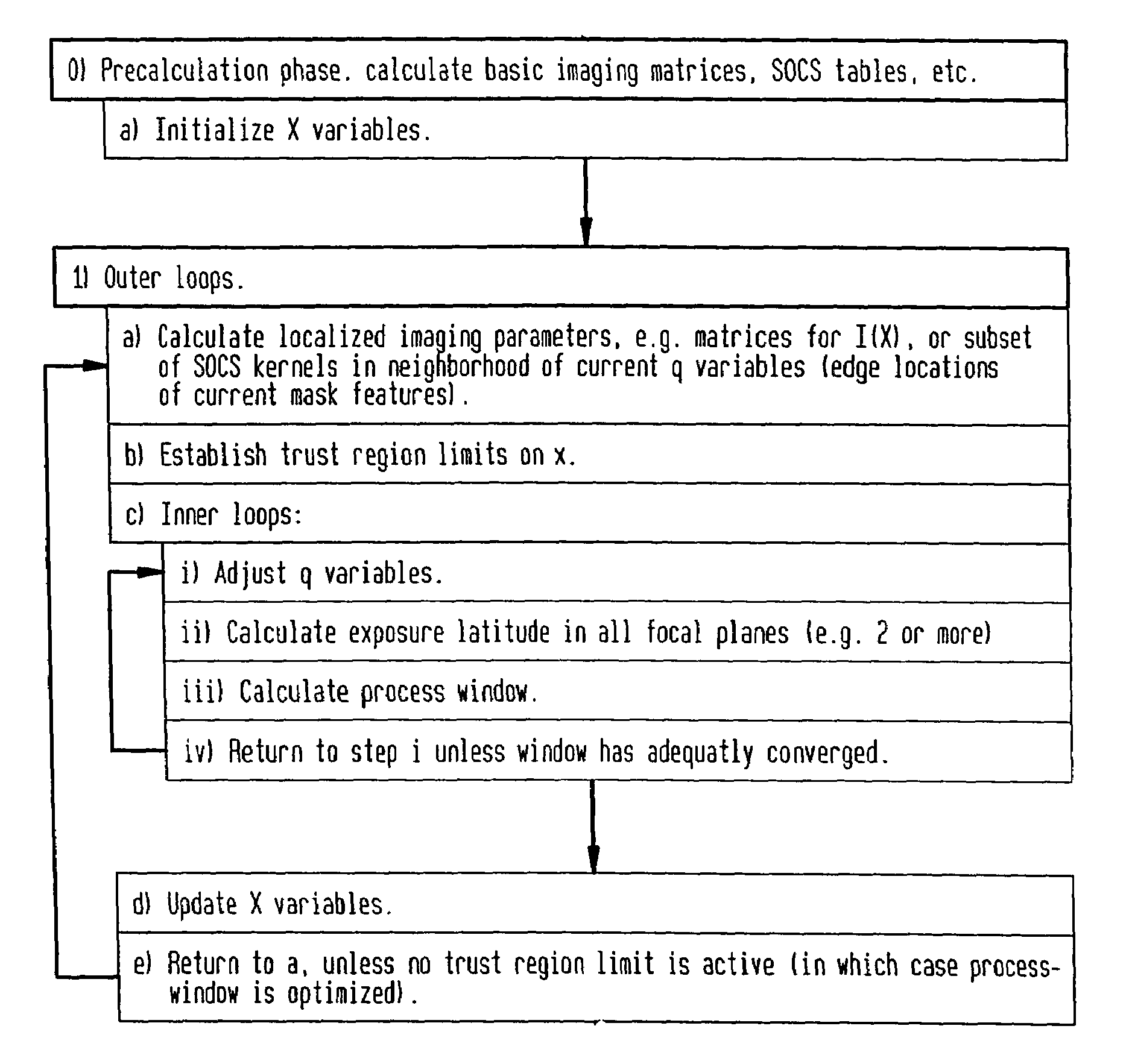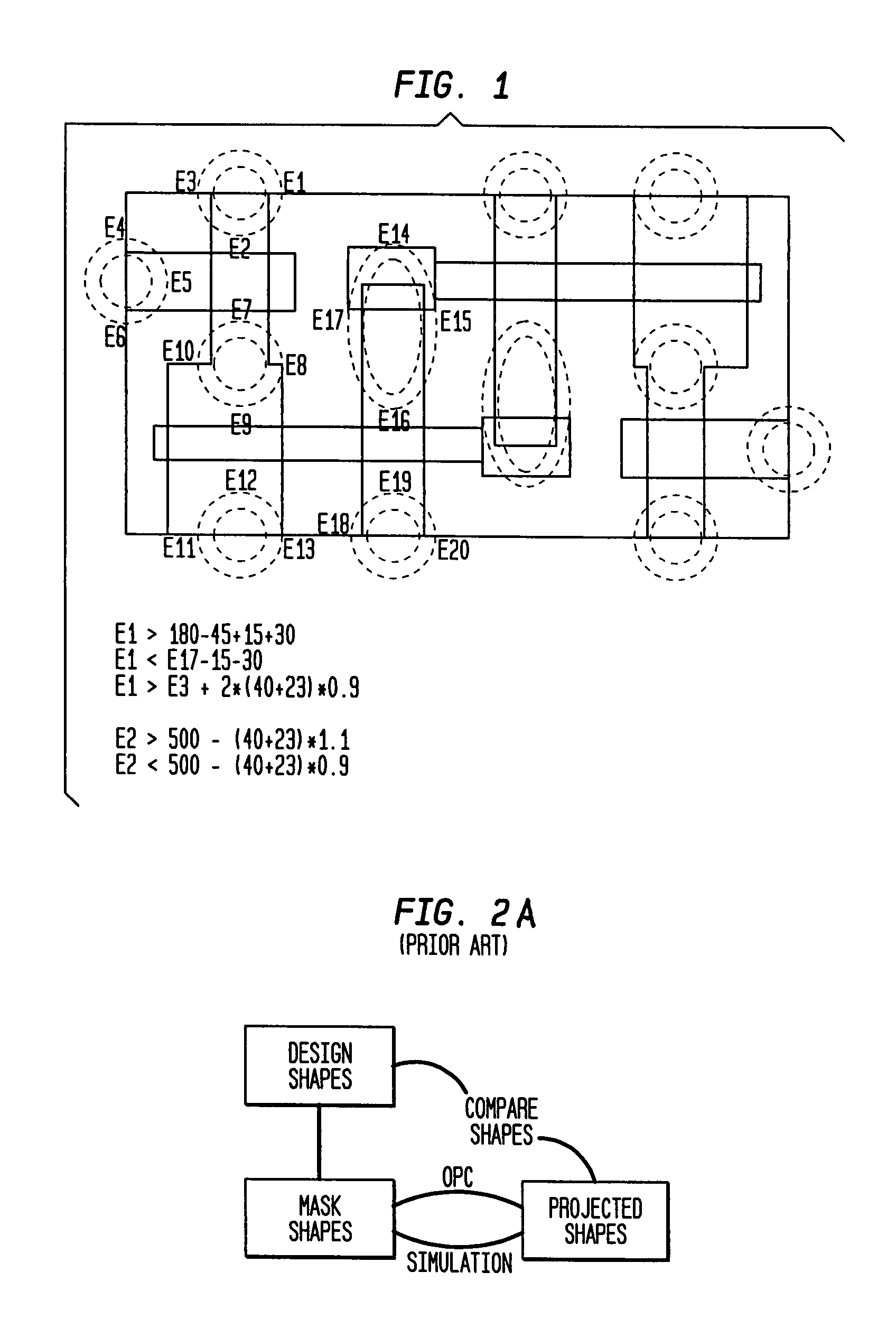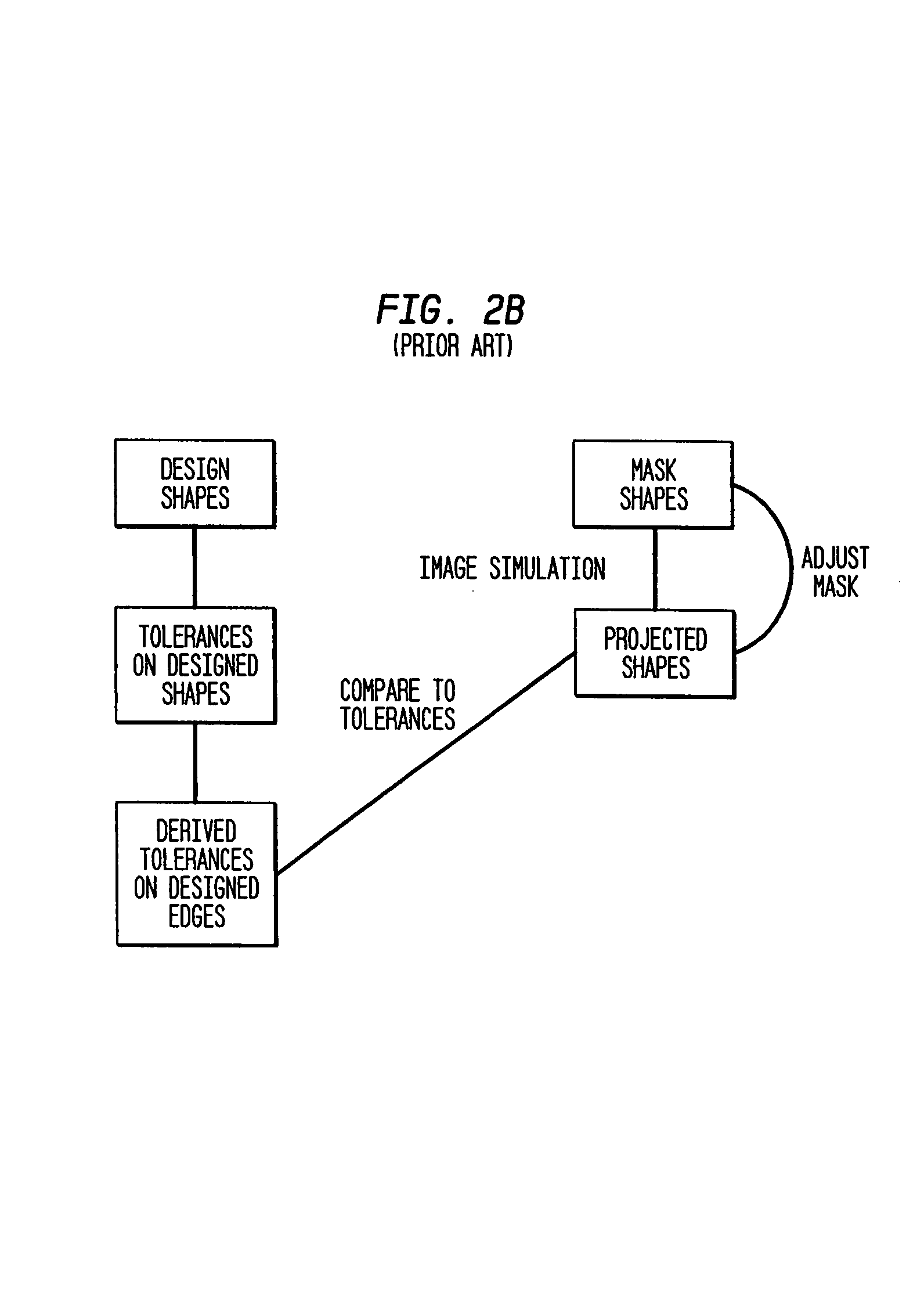Lithographic process window optimization under complex constraints on edge placement
a technology of complex constraints and edge placement, applied in the direction of photomechanical treatment originals, instruments, program control, etc., can solve the problems of excessive constraining of individual feature edges, computationally very difficult to reassess electrical performance after every iteration, etc., and achieve the effect of maximum efficiency
- Summary
- Abstract
- Description
- Claims
- Application Information
AI Technical Summary
Benefits of technology
Problems solved by technology
Method used
Image
Examples
Embodiment Construction
[0032]Rather than constraining feature edges so as to print within a fixed band of positions, as in conventional process window optimization, optimization is effected against more complex edge placement constraints which take the form of an interlinked set, whereby such interlinked constraints can grasp circuit performance requirements in an improved manner. These interlinked constraints can encompass as a special case the traditional constraints on feature edge position, but are more general. Despite this improved representation of circuit electrical properties, the optimization problem remains entirely in the lithographic domain; the goal of optimizing the lithographic process is retained in order to achieve acceptable circuit performance over the widest possible range of dose and focus variation. This new method continues to have the advantage that process window is determined purely through the calculation of image intensities and computationally equivalent quantities. As a resu...
PUM
| Property | Measurement | Unit |
|---|---|---|
| photosensitive | aaaaa | aaaaa |
| light energy | aaaaa | aaaaa |
| shapes | aaaaa | aaaaa |
Abstract
Description
Claims
Application Information
 Login to View More
Login to View More - R&D
- Intellectual Property
- Life Sciences
- Materials
- Tech Scout
- Unparalleled Data Quality
- Higher Quality Content
- 60% Fewer Hallucinations
Browse by: Latest US Patents, China's latest patents, Technical Efficacy Thesaurus, Application Domain, Technology Topic, Popular Technical Reports.
© 2025 PatSnap. All rights reserved.Legal|Privacy policy|Modern Slavery Act Transparency Statement|Sitemap|About US| Contact US: help@patsnap.com



